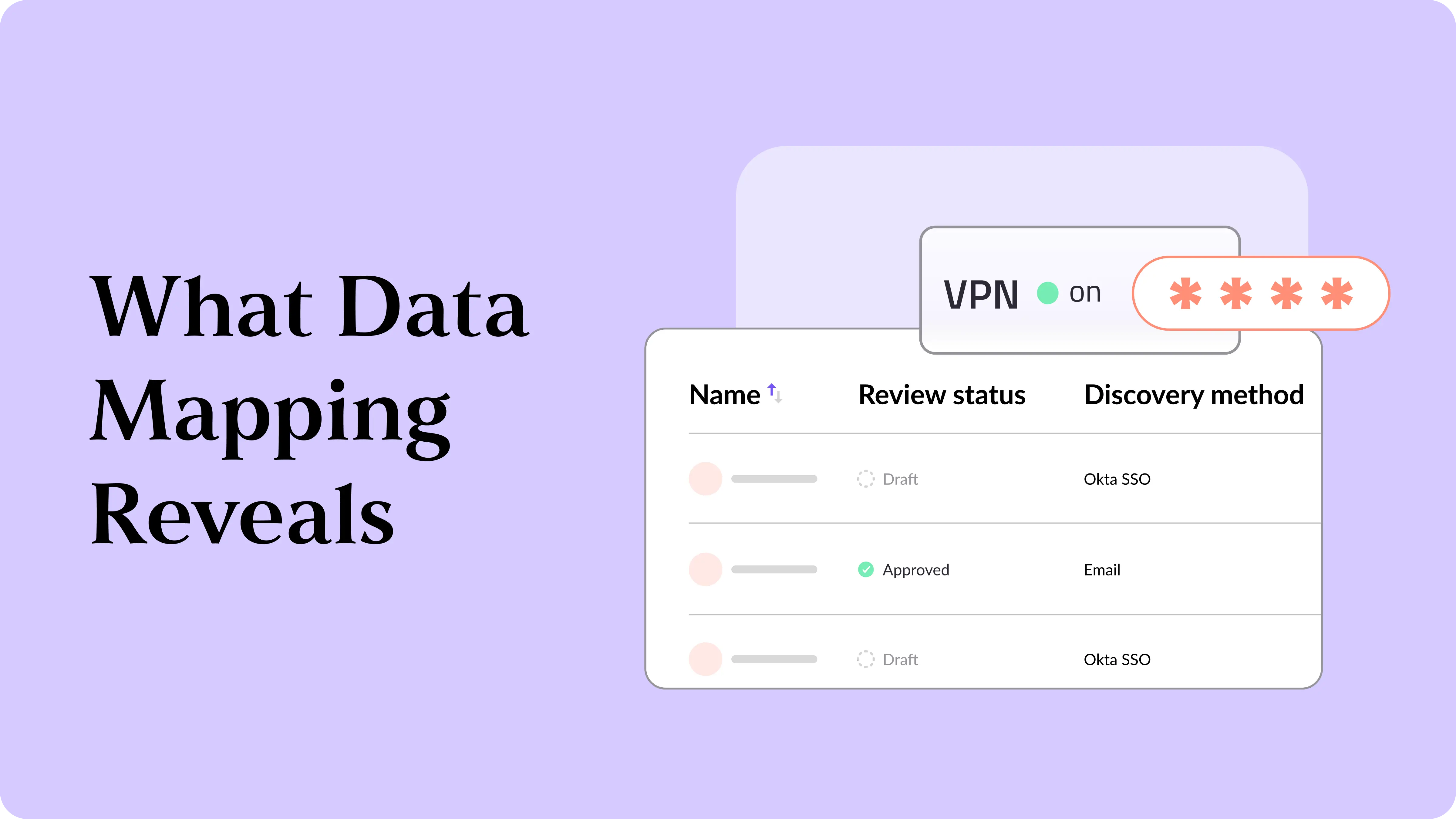What Data Mapping Reveals

Data privacy is all about visibility. Every action organizations are required to conduct begins with knowing what data they have and where, making data mapping a crucial first step.
And this step isn’t just a technical one. When conducted properly, data mapping can reveal the full picture of your data practices and the potential vulnerabilities behind it. In other words, data mapping uncovers what you’ve overlooked. Whether you’re about to build a mapping process or have been mapping your data but remain unsure of the outcome you should be aiming for, here are a few points worth considering.
Shadow IT and Shadow AI
Shadow IT isn’t new. Employees have long found workarounds, using unauthorized tools to move faster or work more easily. Personal projects and the tools they involve may also find their way onto business devices. This is a growing problem, and Gartner predicts that by 2027, 75% of employees will be using technology that the organization’s IT department is unaware of, a sharp rise from 41% in 2022.
Alongside the scope of shadow IT, the nature of this problem also shifts. Today, many of those tools are AI-powered, rapidly accumulating data and exposing organizations to a whole new set of severe vulnerabilities.
Whether it’s a designer using a public generative AI engine or a sales rep importing leads into a self-installed CRM extension, these shortcuts can introduce major compliance gaps. Even the most sensitive departments suffer from this issue, as 50% of finance professionals report using unauthorized AI tools, and another 23% are considering it. The organization might be unaware that data has been shared or processed elsewhere, let alone whether it’s been appropriately deleted or included in the DSAR process.
Forgotten Silos Outside Your DSAR Scope
Another common discovery during data mapping is the presence of forgotten data silos. These might include legacy systems no longer in use or cloud folders that haven’t been touched in years, but still store sensitive personal data.
Discovering these silos is essential when responding to DSARs, but even when no specific request was issued, organizations must meet storage limitations required by GDPR and other regulations. Any silos left out are a potential violation and a compliance risk waiting to happen.
Third-Party Vendors and Exposure You Didn’t Expect
You might have a list of approved vendors. You might even have a spreadsheet noting which ones receive personal data. But data mapping often shows a more complicated reality.
Many companies find that data is flowing to vendors they didn’t anticipate via integrations, plug-ins, or platform features. It might even be shared or sold by vendors you did approve without your knowledge.
In some cases, data ends up in environments that weren’t meant to store it long-term. In others, vendors have more access than they should, or haven’t kept up with required data handling standards. In addition to compliance issues, when customer data leaks, it doesn’t matter to your audience who owns the systems; the trust is broken just the same.
From Insight to Action
Data audits are not a one-and-done process. Privacy practices and risks shift constantly, especially with the pace of AI adoption, remote work tools, and product-led growth strategies.
Your data mapping technology and strategy should do the following:
- Create a structured, ongoing procedure that keeps you updated and fully aware.
- Surface unknown systems and show what types of personal data pass through them.
- Identify where personal data exists and flag systems that haven’t been recently accessed or aren’t integrated into your standard DSAR workflows.
- Reveal which vendors receive what types of data, through which systems, and at what volume.
- Tell you not only where personal data is, but also how it’s flowing, who’s accessing it, and whether the risk profile is growing.
- Provide practical recommendations on what to address and how, based on regulatory exposure and business impact.
When it comes to data privacy, what you don’t know really can hurt you. Data mapping helps discover the unseen so you can respond confidently and create a smarter privacy strategy.